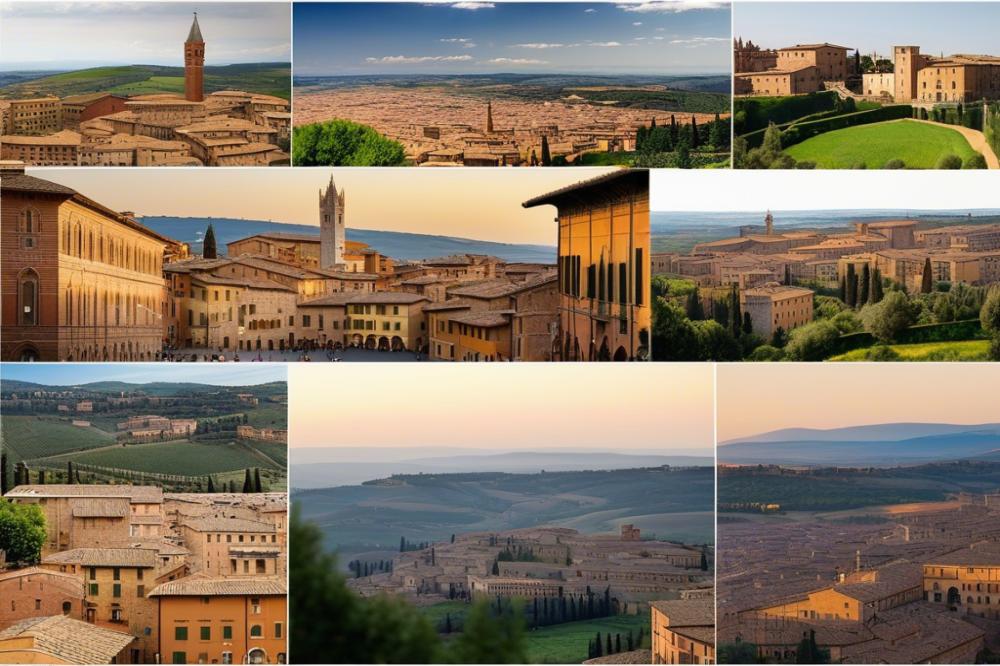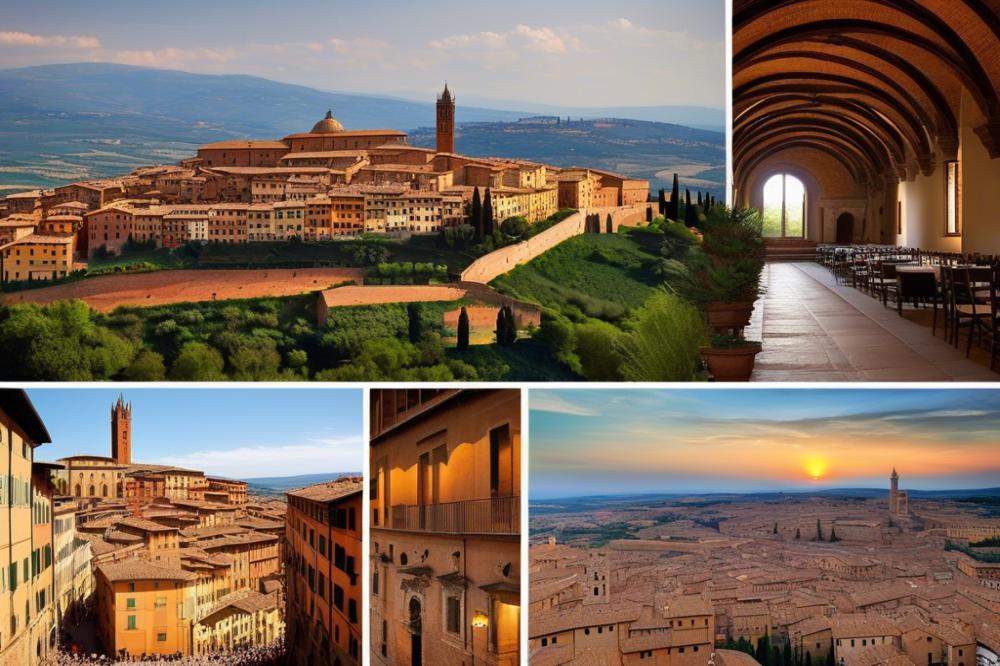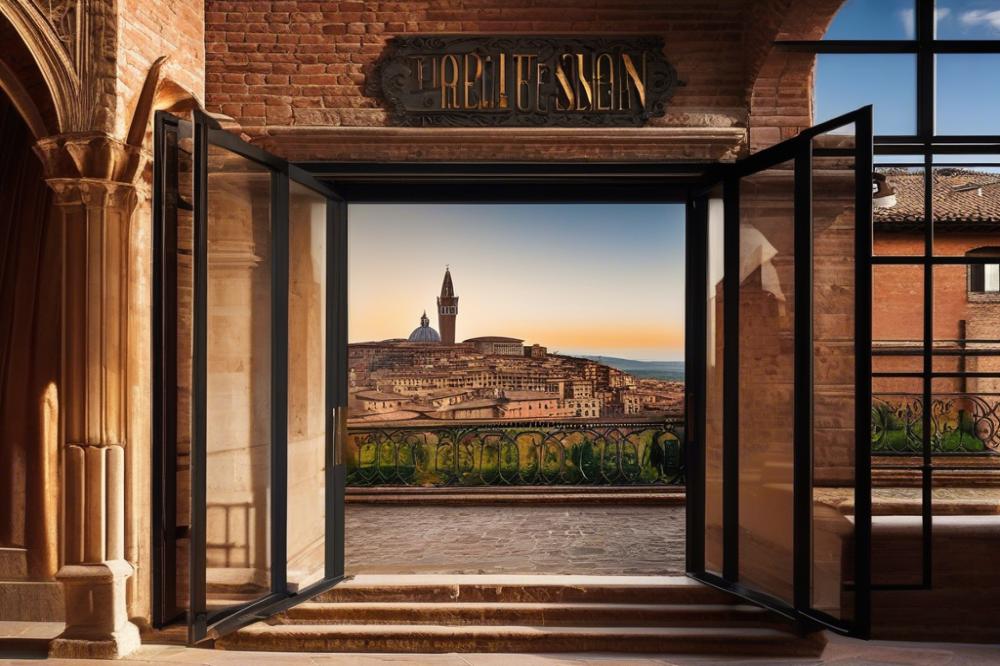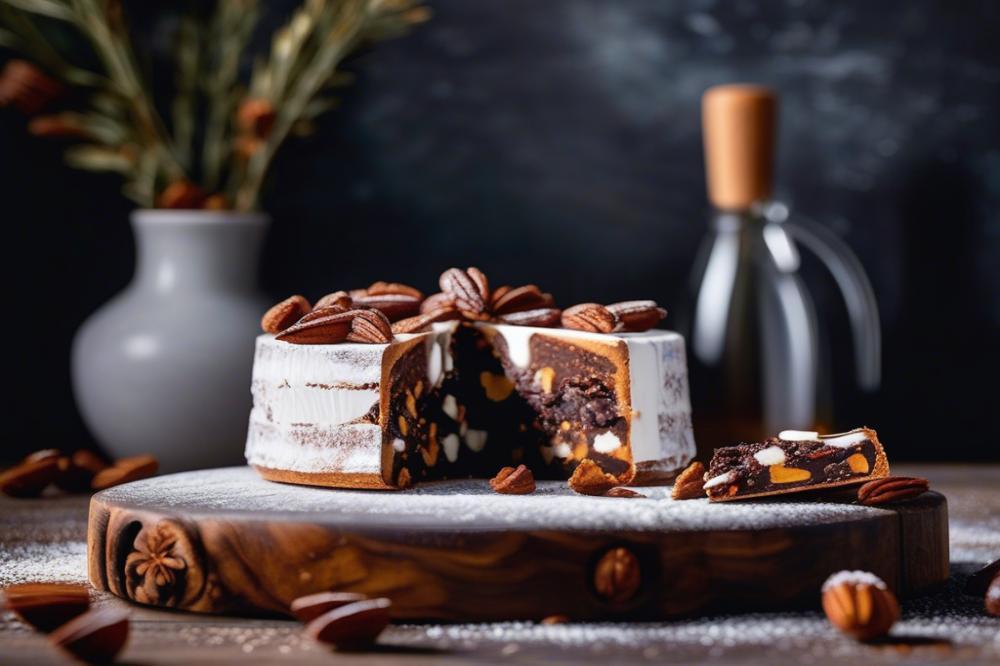Introduction
Panforte di Siena is a cherished Italian dessert that embodies the spirit of festive baking. This traditional recipe hails from the medieval city of Siena, where its roots stretch back to the 13th century. Its creation coincided with a flourishing trade of spices, nuts, and candied fruit, making it a vital part of the region’s culinary heritage.
Once considered a dessert reserved for the Christmas season, Panforte carries great cultural significance. Families still gather to prepare this delicacy, as its rich flavors echo the warmth and joy of the holidays. The combination of spices, nuts, and dried fruit makes it a delightful treat that appeals to many tastes.
This Italian staple is also gluten-free, making it a fantastic option for those with dietary restrictions. Today, many opt for homemade versions, allowing them to control the ingredients and customize the flavors. As the holiday season approaches, the aroma of baking Panforte fills kitchens, inviting friends and family to partake in its deliciousness.
The history of Panforte is as layered as its flavors. Sienese merchants once used the spice trade to their advantage, ensuring the dessert became a marker of prosperity. Even now, it remains a symbol of the city’s rich past and is often gifted during the festive season.
The Essence of Panforte di Siena

Panforte di Siena stands out in the world of desserts, embodying the heart of Italian cuisine. This traditional recipe hails from Siena, a city known for its rich culinary history. The dessert is dense and chewy, crafted from an array of delightful ingredients. Its striking blend of flavors captivates anyone who tries it.
Several elements contribute to the flavor profile. First, spices play a pivotal role. Cloves, cinnamon, and nutmeg infuse a warm, aromatic essence. These spices create a comforting foundation that is both festive and inviting. Nuts add an additional layer of texture and crunch. Almonds and hazelnuts are often used, providing a satisfying bite. Finally, candied fruit, such as orange peel and dried figs, introduces a sweet, chewy contrast. Together, these components create a symphony of flavors that dance in your mouth.
Many people compare Panforte di Siena to fruitcake, as both desserts are typically rich and contain dried fruits and nuts. However, Panforte often has a more pronounced spice flavor. While fruitcake can be dense and sometimes dry, this Italian delight is softer and more moist. The combination of ingredients gives it a uniqueness that is hard to replicate. Surprisingly, Panforte is also gluten-free, making it suitable for those with dietary restrictions. It is possible to enjoy this homemade treat without worrying about gluten content.
As the festive season approaches, many families incorporate Panforte into their Christmas dessert tradition. The process of preparing this sweet is a cherished part of festive baking. With its rich flavors and historical significance, it serves as a delicious reminder of Italy’s culinary heritage. Discovering the art of Panforte di Siena opens up a delightful world of taste and tradition.
Ingredients List and Cooking Instructions

Creating a delicious Panforte di Siena requires a variety of ingredients that come together in this festive baking tradition. Below is a comprehensive list of everything you need:
- Almonds: 200g
- Hazelnuts: 100g
- Candied orange peel: 150g
- Candied lemon peel: 50g
- Sugar: 150g
- Honey: 100g
- Cocoa powder: 30g
- Mixed spices (cinnamon, nutmeg, cloves): 1 tsp each
- Flour (gluten-free option like almond flour): 50g
Preparation and Baking Instructions
Follow these step-by-step instructions to make your own Panforte di Siena:
- Preheat your oven to 180°C (350°F). This will help create a perfect baking environment.
- Prepare a round cake pan by lining it with parchment paper. Leave some overhanging edges for easy removal later.
- In a large mixing bowl, combine the almonds, hazelnuts, candied orange peel, and candied lemon peel. Stir in the cocoa powder and mixed spices. These nuts and fruits give the cake its distinct flavors.
- In a saucepan over medium heat, mix the sugar and honey. Stir until the sugar dissolves and the mixture begins to bubble vigorously. Care should be taken, as this can get very hot.
- Once the honey-sugar mixture reaches a syrupy consistency, pour it over the dry ingredients in the mixing bowl. Quickly stir all the components together to create a thick batter.
- Add the flour gradually. Mix until it is fully integrated into the mixture.
- Transfer the batter into the prepared cake pan. Use a spatula to spread it evenly.
- Bake in the preheated oven for about 25 to 30 minutes. You want it to be firm yet slightly soft in the center.
After baking, remove the panforte from the oven and let it cool in the pan for about 10 minutes. After that, carefully lift it out using the parchment paper edges. Place it on a wire rack to cool completely. This cooling step is crucial for the texture.
To store your homemade panforte, wrap it tightly in wax paper or plastic wrap. Keep it in a cool, dry place. Enjoy it within a few weeks. This traditional recipe is perfect for a Christmas dessert or any festive occasion. Its rich blend of spices, nuts, and candied fruit will surely be a hit!
Nutritional Information

Knowing the nutritional profile of your ingredients helps in meal planning. Panforte di Siena contains a rich mix of spices, nuts, and candied fruit, all contributing to its overall nutritional value. Each component adds its own unique properties. Let’s break down these key ingredients.
Nutritional Breakdown of All Ingredients
Calories in a typical slice of this traditional recipe can vary but generally hover around 300. Fats, mostly from nuts, contribute about 15 to 20 grams per serving. Carbohydrates come mainly from sugars in the candied fruit and account for approximately 40 to 50 grams. Protein content from nuts and egg whites lies around 5 to 7 grams. Fiber is also present, aided by the dried fruits and nuts, offering about 3 to 5 grams per serving.
Health Benefits of the Key Ingredients
Nuts are a standout ingredient, delivering healthy fats. These fats are good for heart health and provide essential nutrients. Spices like cinnamon and nutmeg not only enhance flavor but also carry antioxidant properties. Candied fruits offer vitamins and minerals, contributing to overall wellness. This combination lends Panforte di Siena some surprising health benefits despite its status as a Christmas dessert.
How It Fits Into Festive Baking
During the holiday season, many people enjoy festive baking. Homemade Panforte di Siena stands out because it embodies the essence of Italian cuisine. Families often share this treat, making it a centerpiece of festive gatherings. Being naturally gluten-free, it appeals to various dietary preferences. Each bite combines rich flavors and textures, making every moment special. Including it in celebrations can add a touch of tradition and warmth to holiday festivities.
Variations and Tips for Making Panforte di Siena
Suggestions for Alternative Nuts and Dried Fruits
Nuts play a vital role in the creation of this traditional recipe. While hazelnuts and almonds are classic options, consider experimenting with walnuts or pistachios for a different flavor profile. Dried fruits can also be swapped. Dates bring a rich sweetness, while figs add a chewy texture. For a touch of tartness, try dried cranberries or cherries. Each combination offers a unique twist on this Italian cuisine staple.
Ideas for Flavor Enhancements Using Different Spices
Spices elevate the taste of Panforte di Siena immensely. Traditional recipes often feature cinnamon and nutmeg, but don’t hesitate to think outside the box. A hint of cardamom can introduce a warm, aromatic quality. Ginger adds a zing that pairs well with the sweetness of candied fruit. Cloves can bring depth to the flavor, making this Christmas dessert truly special. Mixing spices allows you to tailor the dessert to personal preferences.
Tips for Achieving the Perfect Texture and Presentation
Texture is key when making this dessert. A mixture that is too dry may crumble, while one that is overly wet can become gummy. First, carefully balance the ingredients. Using a scale can help measure the right proportions. Bake the mixture until it feels firm to the touch but not dry. Topping with a dusting of powdered sugar makes for an attractive finish. Presentation is important. Cut the panforte into small squares or triangles for serving. This makes it easy to share during festive baking events.
Advice on Storage and Serving Suggestions
Proper storage will keep your homemade creation fresh for longer. Wrap the panforte tightly in plastic wrap or parchment paper, then place it in an airtight container. This will help maintain its moisture. Panforte is best served at room temperature, which enhances its flavors. Pair it with a glass of sweet dessert wine for an elegant touch. It also makes a delightful addition to a cheese platter, offering a balance of sweetness and savory. Enjoying this dessert with friends and family makes for a memorable occasion.
Cultural Significance and Festive Traditions
Panforte di Siena holds an important place in Italian holiday celebrations, particularly during Christmas. This rich dessert has roots in the medieval city of Siena. It symbolizes generosity and festive joy. Many families pass down the traditional recipe through generations. Preparing and sharing this treat brings people together during holidays.
With its mix of spices, nuts, and candied fruit, it offers a burst of flavors. During the Christmas season, panforte is often served as a dessert. It is also enjoyed as a sweet treat paired with a glass of wine. Friends and family gather to savor this mouthful of history, making it a cherished part of their celebrations.
In different regions of Italy, panforte might take on unique variations. Tuscans especially hold a deep connection to this dessert. Their version is often richer due to local ingredients. Other areas may introduce different spices or fruits, creating diverse flavors while keeping true to the main concept. To some, it may serve as a gluten-free option, which adds to its appeal.
Festive baking often involves making panforte at home. Many begin preparing it weeks before Christmas to allow the flavors to meld perfectly. This process becomes a family affair. Children help mix ingredients, while elders share stories of the past. Such activities add warmth to the celebration, fostering a sense of community.
Sweets like panforte are integral to holiday gatherings throughout Italy. These culinary traditions reflect culture and history. Whether enjoyed in Siena or elsewhere, this dessert brings a distinctive taste to every table. Each bite offers a connection to Italy’s vibrant culinary heritage.
Final Thoughts
Panforte di Siena holds a special place in the world of Italian baking. This rich and dense dessert showcases the rich flavors and textures typical of Italian cuisine. Its history stretches back hundreds of years, making it a cherished treat during festivals and celebrations. Anyone who tastes it cannot help but appreciate the skill involved in crafting such a delightful dish.
Making this traditional recipe at home can be a rewarding experience. Gather the ingredients and set aside time for this culinary adventure. Even if it seems complex at first, each step brings you closer to creating something truly special. The process itself offers a chance to connect with Italian heritage while exploring your baking abilities.
Sharing Panforte with loved ones brings joy and warmth to any occasion. The act of giving homemade treats deepens bonds and creates lasting memories. As friends and family gather, sharing this unique dessert can spark conversations about tradition, culture, and love for food. Embrace the joy of festive baking this season, and consider trying your hand at this delightful creation.

